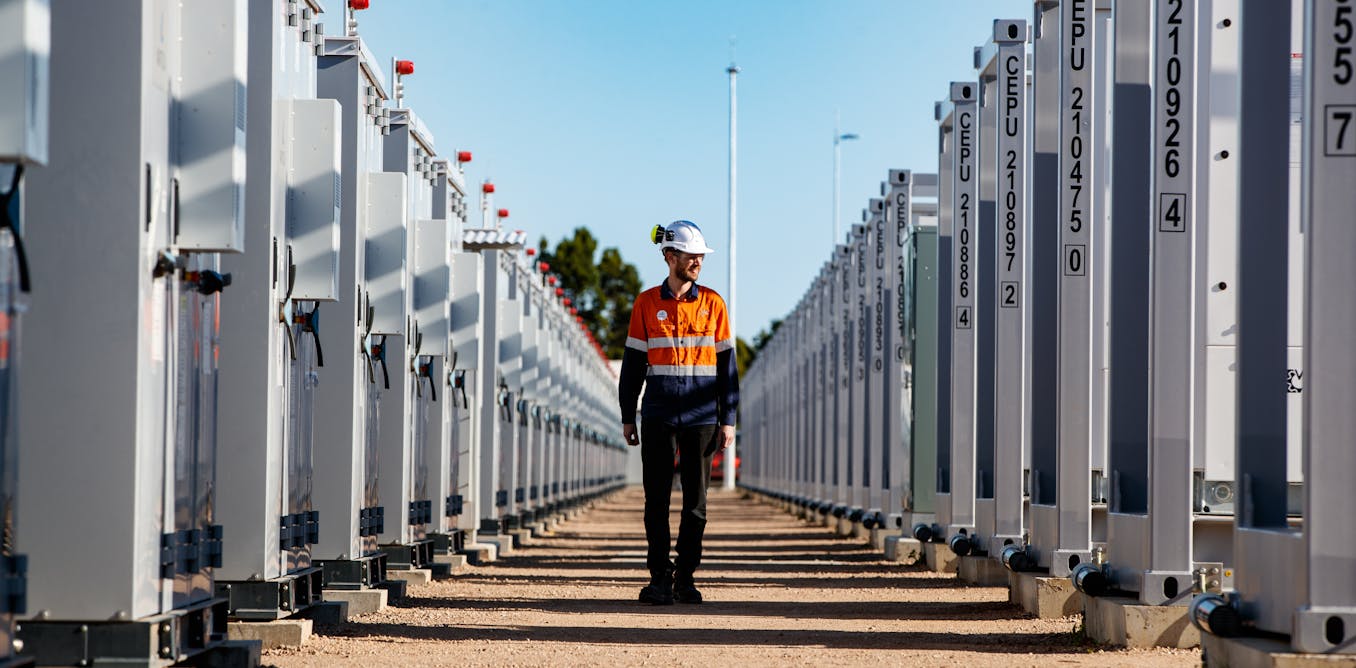Almost two years after the West responded to the Russian invasion in Ukraine with a blistering array of sanctions, a fresh round of financial measures was announced by the Biden administration on Feb. 23, 2024. The new sanctions, imposed following the death of Russian opposition leader Alexei Navalny, raised the number of individuals and entities now targeted by the U.S. to more than 2,000.
These measures have run the gamut, from targeted sanctions against President Vladimir Putin and other members of Moscow’s elites to broader restrictions on trade and investment.
Yet there are few signs the sanctions have had a meaningful impact on Putin’s ability to wage war.
As experts on economic sanctions, we believe the blunting of the sanctions’ impact can be attributed in large part to how Putin has been able to “sanction-proof” the Russian economy with help from friendly nations.
Russian sanctions regime
The sanctions regime put in place by the U.S. and its partners in the European Union, along with Japan, Australia, New Zealand, South Korea and Switzerland, has been both targeted and broad.
Restrictions have been placed on individuals and firms on an ever-growing blacklist – the U.S. calls it the Specially Designation Nationals and Blocked Persons List. The list includes entities both in Russia and within Russia’s procurement network and supply chains operating in other countries.
Inclusion on the list results in a proscribed entity’s assets being blocked. Meanwhile, U.S. nations and businesses are barred from conducting business with entities on the list.
Economic sanctions have also focused on specific sectors, such as the financial services sector. Banks have been barred from clearing payments and facilitating the flow of money in Russia’s key revenue generating sectors, such as the oil and energy industries. Such sectoral sanctions target all firms in the given sector and, theoretically, can have a devastating effect on an economy.
In addition, the U.S. has been both surgical and cautious in its use of secondary economic sanctions. Secondary economic sanctions, which penalize individuals and firms in third-party countries that maintain trade and financial transactions with proscribed entities, can be politically and diplomatically challenging given that targeted firms often aren’t doing anything illegal in their home countries.
The United States’ Bureau of Industry and Security in the Department of Commerce and the EU have also implemented export controls that restrict Russia’s military sector from accessing key technologies for the war effort.
Dwindling effect
These economic sanctions placed significant stress on the Russian economy in the first year of the war. Evidence of economic pain in 2022 can be seen in the jump in the rate of inflation from 6.7% to 13.8%. Meanwhile, Russia’s gross domestic product fell 3% to 4% in the first nine months of the war, although analysts had initially forecast a GDP decline of up to 10%.
But since then, the Russian economy has withstood the impact of sanctions. According to data from the International Monetary Fund, the rate of inflation is anticipated to drop to 6.3% in 2024. Some analysts predict Russia’s economy to recover further in 2024, with the IMF forecasting a 2.6% growth in GDP – up from earlier estimates of just 1.1% growth.
Alexander Kazakov/AFP via Getty Images
This dwindling impact on the Russian economy points to a general truth: Sanctions are hard to maintain. They are only effective when they are consistently enforced, and few countries apart from the United States have had the stamina to enforce export controls over a prolonged period.
‘Sanctions-proofing’ Fortress Russia
Russia has also been able to adapt to the sanctions by adopting several strategies, some of which began long before the 2022 invasion. By then, Russia had been coping for years with sanctions put in place after its illegal annexation of Crimea in 2014. The plan put in place by Moscow to fortify the economy has been named “Fortress Russia” and consisted of building up significant foreign exchange reserves to maintain confidence in the Russia ruble.
Diversifying foreign exchange reserves, though, is just one part of the strategy.
The limited economic and financial sections imposed by the U.S. and others after the annexation of Crimea provided Russia with space and time to undertake a strategy of sanctions-proofing its wider economy.
Sanctions experts such as Caileigh Glenn have identified four strategies that countries employ to sanctions-proof their economy: import substitution, strengthening foreign partnerships, retaliation through countersanctions and reducing dependency on any single reserve currency.
While Russia has employed a combination of these strategies, cultivating partnerships with countries that are willing to ignore Western sanctions – or willing to look the other way – appears to have been a particularly successful strategy.
China: A crucial partner
Fortunately for Russia, China has been a somewhat willing partner.
Throughout the Ukraine conflict, China has played a balancing act: eager to maintain both its relationship with Russia as well as economic ties with the U.S., the EU and Ukraine.
In line with that policy, China has refrained from issuing its own economic sanctions against Moscow and has filled, for Russia, the void left by a reduction in trade with sanctioning countries.
In 2023, for example, Russian officials stated that around half of the country’s oil and petroleum exports were exported to China – far higher than before the sanctions were imposed. Similarly, China’s exports to Russia, including smartphones, rose astronomically from its pre-Ukraine war levels, largely due to the U.S.’s and EU’s sanctions against Russia.
The China-Russia partnership was on the rise even before the 2022 invasion. Presidents Xi Jinping and Putin have met several times since 2013, a year before Russia’s invasion of Crimea. And since then, the two countries have conducted a variety of bilateral agreements in areas such as trade, energy, diplomacy and military cooperation.
As such, the increase in trade between China and Russia since 2022 is part of a longer trajectory of Moscow relying less on Western powers.
And this has made the Russian economy less vulnerable to sanctions from Western countries. China’s share of Russian trade increased from around 10% in 2013 to 18% in 2021. Over the same period, the EU’s share dropped from 47% to 36%, and the U.S.’s remained relatively stable – at around 3% to 4%.
However, Russia’s ability to insulate itself from sanctions through increased trade with China may be facing a setback. The EU recently issued secondary sanctions on 193 firms and individuals who are doing business with Russia, including three firms in mainland China and one in Hong Kong. The U.S. is considering similar sanctions against Chinese firms as well.
This may be particularly problematic for Russia, as China is much less dependent on Russia economically. Russia comprised only 2% of China’s trade share in 2021, and although trade between the two increased in 2023, trade with the U.S., the EU and other countries within Asia remains more integral to the Chinese economy.
Other sanction busters
North Korea and Iran – themselves targets of extensive sanctions – have also emerged as important partners in Russia’s strategy to sanctions-proof its wartime economy. Consistent with a trajectory of closer ties since Putin took office, North Korea is now allegedly providing Russia with missiles and other arms. Similarly, Iran has sold drones to Russia for use in the Ukrainian conflict.
Western countries have been engaging in sanctions-busting, too. In December 2023, the U.S. Treasury unsealed indictments relating to a Belgium-based network accused of coordinating the sale of electronics to Russian firms. Such networks undermine the export controls designed by the West to limit Russia’s acquisitions of critical technologies.
Also, spotty enforcement of sanctions has allowed Russia to circumvent restrictions. A report by Reuters on Russia’s wartime supply chain found that from February to October 2022, some US$2.6 billion in computer and electronic components made its way into Russia, with at least $777 million of the products originating from Western firms such as Intel and Texas Instruments.
These exports to Russia also included chips that could be used in the manufacturing of high-tech weaponry. Recent analysis from the KSE Institute found that Russian imports of “high-priority battlefield items” have largely recovered since sanctions were imposed in 2022.
Next steps
Key to improving the effectiveness of economic sanctions is the development of robust mechanisms of enforcement – both against firms and individuals.
Greater use of secondary sanctions along with stiffer penalties against sanctions violators should raise the costs of sanctions-busting and make such transactions less attractive. Research has shown that the longer economic sanctions persist, the less effective they become – and two years into the Ukraine conflict, Russia has shown itself to be quite adept at avoiding the full force of the West’s attempts to squeeze its economy and derail its war effort.

The post “How Russia has managed to shake off the impact of sanctions – with a little help from its friends” by Keith A. Preble, Visiting Assistant Professor of Political Science, Miami University was published on 02/29/2024 by theconversation.com






































